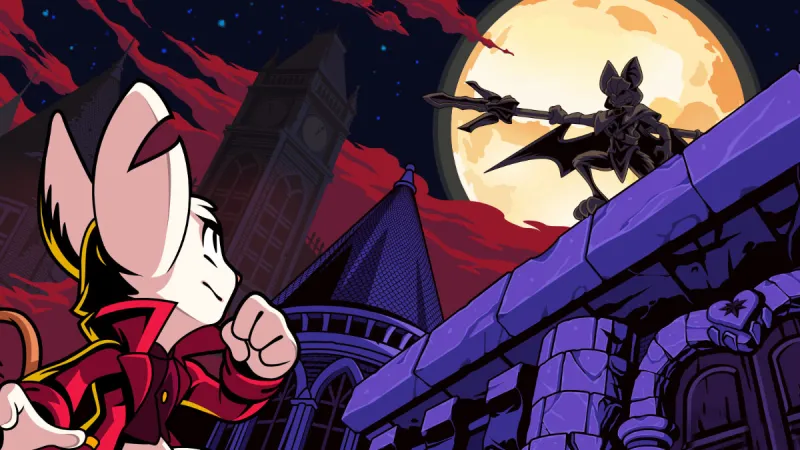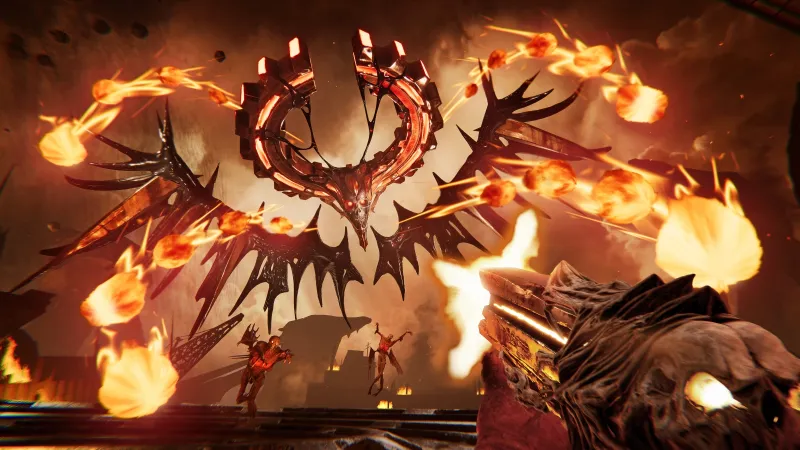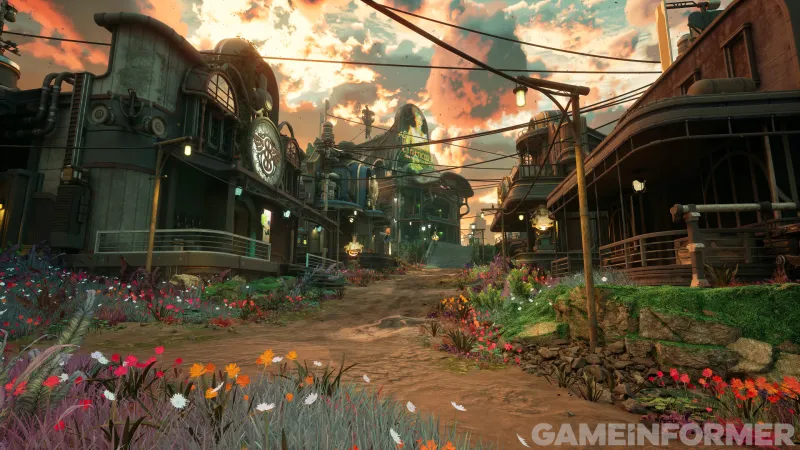In some ways, Silent Hill f represents a fresh start for the revered franchise. The first new mainline entry in over 13 years unfolds in Japan, far from the series’ namesake foggy American town, and during the 1960s, no less. To see how these changes are molding this installment, I traveled to Konami’s office in Tokyo to play the first five hours of the survival horror title. Despite the radically different setting and era, Silent Hill f feels like a return to the classic entries, albeit with some pain points surrounding combat.
If you’re a newcomer to Silent Hill, fret not; developer NeoBards and Konami are treating Silent Hill f as a fresh slate divorced from the established canon, making it a great entry point. The game stars Shimizu Hinako, a rebellious teenage girl living in the small, secluded town of Ebisugaoka. Hinako has a tumultuous home life. She hates her abusive father and resents her subservient mother for allowing her father to have his way with them. This is perhaps why Hinako rejects traditional female roles and behaves more “masculine”, to the chagrin of her parents and even some of her friends.
Despite projecting a tough exterior, Hinako thinks little of herself, writing in her journal that “there’s not a single extraordinary thing about me.” Hinako does adore her older sister, however, viewing her as a protector and confidant. Unfortunately, her sister has since married and moved out, leaving Hinako alone in a home she detests.
Hinako finds support in her childhood buddy, Shu, and fellow friends Sakuko, a spunky girl hailing from a family of shrine priests, and the more shy Rinko, who may have a crush on Shu. Unfortunately, it isn’t long before a sinister fog and crimson vein-like vines overtake their home. I don’t know why or how it happens, but the village is transformed into a nightmarish, yet hauntingly beautiful version of itself, thanks to the blood-red flower blossoms overtaking everything. Monsters stalking the streets have replaced Ebisugaoka’s residents, and Hinako becomes separated from her friends.
Speaking to developer NeoBards creative director Al Yang, Silent Hill f primarily draws design inspiration from Silent Hill 1 and 2. Regarding combat, however, the team examined Silent Hill 4: The Room and its more melee-centric action. Don’t expect to wield guns in Silent Hill f; Hinako only uses close-range weapons such as pipes, bats, and knives. Weapons also degrade and break with use, and you can only equip three at a time. Although you can repair them using tool kits, part of Silent Hill f’s challenge comes in monitoring weapon durability and determining if it’s worth wearing down a good weapon against a terrifying foe.

I make this determination often; the village’s narrow alleyways means circumventing enemies isn’t as easy as it was in earlier Silent Hill games. As such, I regularly had to rely on Hinako’s dodge to evade attacks, which expends a stamina meter. Executing a last-second perfect dodge replenishes this bar – a crucial skill to master as you’ll need your energy to fend off unavoidable threats.
Bludgeoning fleshy, mannequin-like creatures and eerie masked scarecrows feels weighty and fittingly clumsy (Hinako is just a kid, after all), whether using light attacks or slower, more powerful heavy attacks, each performed using the right shoulder buttons. If this configuration sounds suspiciously Souls-like, it’s not entirely inaccurate. Between the deliberate attacks and the need to constantly monitor the stamina bar, Silent Hill f has shades of the subgenre From Software popularized.
While that’s fine, Hinako’s stamina regenerates too slowly for my tastes. Even when you don’t fully expend stamina, it takes about a second and a half before it begins to refill, which feels like an eternity because it’s just long enough to be vulnerable to successive attacks from the much-faster enemies. Monsters move quickly and erratically, and dodging threats like a leaping foe that hops around Hinako expends a ton of energy very quickly. I often died simply from lacking the energy to flee after dodging two or three attacks in a row. Hinako describes herself in her journal as being a former track and field athlete, so you’d think she’d have better conditioning.
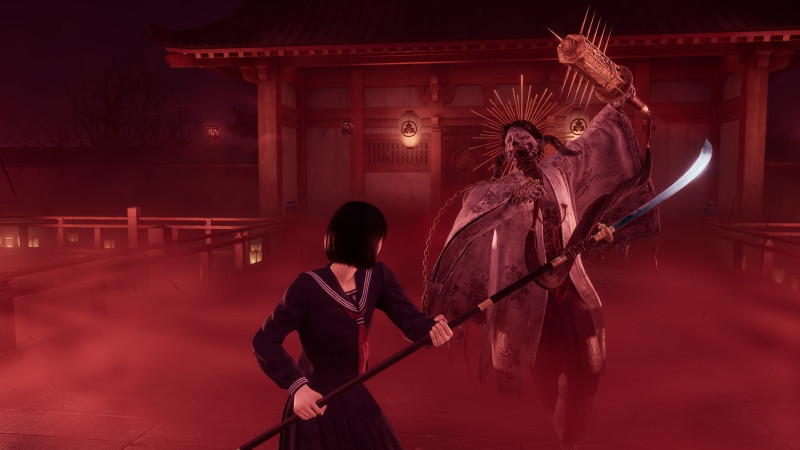
One big, almost Souls-esque boss fight was an absolute nightmare because of this stamina limitation, and not just in the literal sense. Best described as a demonic child wielding a spiked hammer, a torn maw of flapping skin, and draped in priestess robes with long needles sticking out of her, she’s absolute nightmare fuel (especially since my demo station was near a life-size statue of her). This monster’s relentless attacks require constant dodging, more so than the delayed regeneration of your stamina meter can handle. Tack on that you need stamina to retaliate as well as chase her when she begins disappearing/reappearing around the arena, and taking her down is infuriatingly tough. I spent a full hour on this fight and I wasn’t alone. Every person I spoke to shared similar frustrations, and I hope it’s reworked for launch after giving my critiques to the creative director.
When running away isn’t an option, you can interrupt enemy attacks by retaliating when they emit a telltale jittery glow. Nailing this successfully stuns the enemy. While you can achieve this by keeping a sharp lookout – counter windows are fleeting – a mechanic called Focus makes identifying these openings easier. By holding the left shoulder trigger, the screen darkens to better expose and extend the duration of the counterattack window.
However, performing Focus drains Hinako’s Sanity meter, a resource also spent to perform charged Focus Attacks. By holding down the attack and Focus buttons for a period, this special assault deals massive damage at the expense of Sanity. However, readying this attack leaves Hinako vulnerable, and absorbing damage that interrupts your Focus Attack lowers the Sanity bar itself. Focusing while wielding heavier weapons, like a sledgehammer, allows Hinako to perform a block against most attacks, but this expedites weapon degradation. To keep your head above water, an item wheel lets you use various healing items, as well as those restoring Sanity, on the fly.
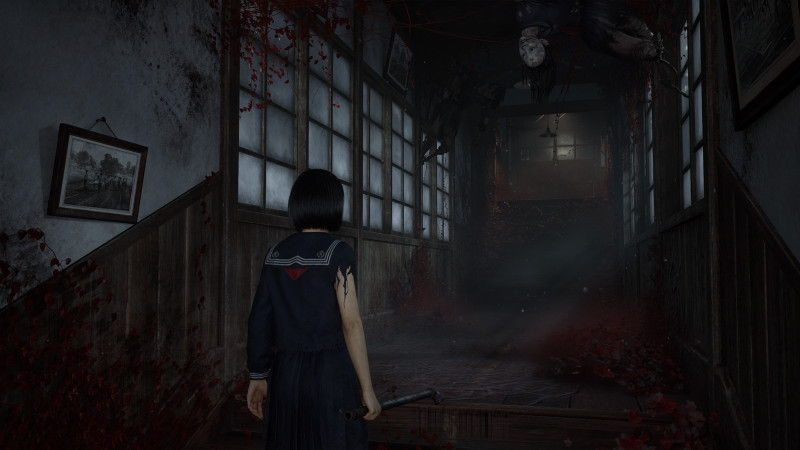
Combat can be very challenging, especially when dealing with more than one adversary at once. I died often, respawning at prayer shrines serving as checkpoints. When the going gets tough, Shrines offer opportunities to improve Hinako’s chances. For example, you can equip her with an omamori, charms that add helpful perks, such as reducing stamina usage. However, you can initially only equip a single omamori at a time, and I regularly swapped them out during especially brutal encounters.
Shrines also allow you to present offerings, whether valuables found during exploration or certain consumables like health items, to earn a special currency called Faith. Spending Faith allows you to replenish your Sanity meter based on the amount spent. You can also use Faith to purchase new omamori from a randomized pool, kind of ike a loot box. I’m not wild on gaining new omamori on a dice roll, given that it not only costs hundreds of Faith points to buy, but each purchase raises the cost by another 100. Why would I want to save up hundreds of Faith points when I don’t even know if the omamori I get will be helpful to a given situation?
Exploring the labyrinthine Ebisugaoka offers many otherworldly surprises, locations, and mysteries. This includes the unexpected assistance of an enigmatic and questionably trustworthy masked man. Draped in white robes to match his white hair, who or what this young man is remains to be seen, but he possesses supernatural abilities and seemingly wishes to help Hinako stay alive. Whether this is out of pure altruism or if the masked man has his own sinister agenda will have to wait for the full release, but Hinako encounters several eerie hints not to trust this person.
In between fighting or avoiding monsters, I encountered several elaborate puzzles, mandatory and optional, while exploring Ebisugaoka’s foggy streets. These riddles can be as clever as they are devious. One required using a poem to find the correct illustrations from multiple, scattered boards filled with wooden pictures – all while evading a patrolling blind beast sensitive to sound. While I enjoyed most puzzles, a few left me scratching my head, and not in a good way.
At one point, I was trapped in a foggy, open farm field that warped me back to its start if I proceeded aimlessly. Finding the correct path required pinpointing a specific creepy scarecrow out of a large group of them, and my only clue was a cryptic message that felt a little too vague. Whenever I thought I knew what to look for, I chose the wrong scarecrow, bringing it to life to attack me as punishment. I bumbled my way through five instances of this exercise (which felt two rounds too long) and finished without ever truly grasping what I was doing.
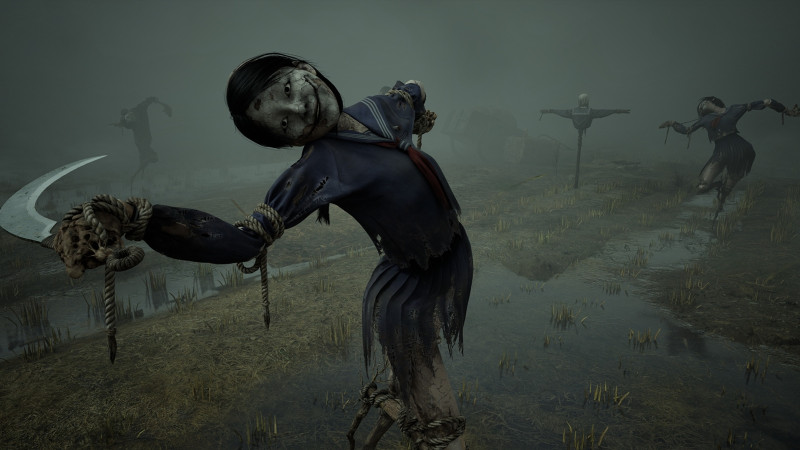
These exercises, along with a sequence in an abandoned middle school that required unlocking doors and avoiding threats, best evoked the Silent Hill of old. Interiors require finding keys to unlock certain doors. You unravel bespoke puzzles to earn new items or clues. All the while, you’ll confront all manner of monstrosities roaming about. The open world contains certain optional structures you can explore, too, such as the home of the town doctor, which has its own mini mystery surrounding his whereabouts.
It’s unclear how many optional locations, puzzles, or enemy encounters Silent Hill f offers, but they likely feed into its multiple endings. True to series tradition, Silent Hill f has five different endings. However, these alternate endings don’t become available until the second playthrough. The first playthrough ends exactly the same for everyone, as NeoBards and Konami want to tell a purposefully crafted story with an intentional beginning, middle, and end.
Once you’ve seen the canonical ending, subsequent playthroughs factor in your actions (how is unclear) and lead to branching outcomes. NeoBards says it did not write these endings as being “Good” or “Bad”. Rather, they’ll be up for interpretation. And yes, one of the endings is the fan-favorite and silly UFO conclusion.

Silent Hill f raised the hairs on my neck more than once, thanks to its frightening creatures and effective sound design, amplified by fantastic 3D audio. While I have a few misgivings with combat, I love the game’s presentation, setting, and atmosphere. Puzzle-solving is clever and enjoyable, and I’m intrigued to see where the story goes (especially the branching endings). Based on what I played so far, the game is preemptively checking the boxes of not only a strong Silent Hill game, but a fun survival horror experience.
Perhaps more than anything, I’m just happy to see the Silent Hill franchise firing on all cylinders again. Silent Hill f has the makings of a strong entry that maintains the positive momentum of last year’s great Silent Hill 2 remake.




